This website uses cookies so that we can provide you with the best user experience possible. Cookie information is stored in your browser and performs functions such as recognising you when you return to our website and helping our team to understand which sections of the website you find most interesting and useful.
Symbols of Change: the contemporary works of Andrey Laponov
By Words Michelle Johnson Translation Claudia Dickson | 14 January 2023 | Culture
The Ukrainian artist’s vision combines traditional skills, precious gold and ancient symbolism to create a thoroughly modern form of icon painting. Here, he shares his philosophical approach
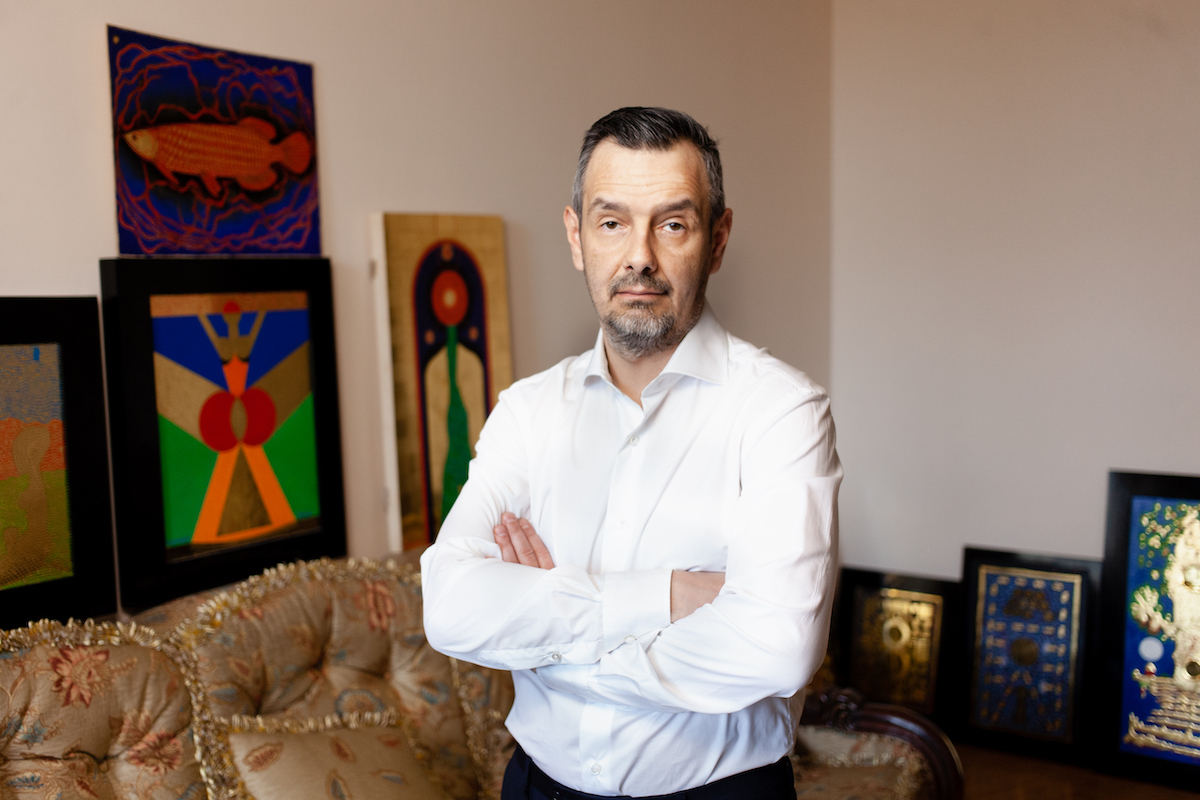
Throughout history, the importance of gold has been impossible to understate, spanning its allure in art and jewellery-making, use as a symbol of power for world monarchies and religions, to its financial role as a sure investment in the modern age. In fact, says Ukrainian artist Andrey Laponov – who brings his contemporary icons to life through use of this precious metal – gold has an energy all of its own.
“Gold has a noble aura,” he says. “It absorbs the energies of the master during the stage of creation.”
Andrey, 44, began his career in the 1990s as a realist painter before he decided to train with artists specialising in the restoration of religious icons. Highly technical and deeply symbolic, these devotional paintings of holy figures originated in Byzantine and Eastern churches from the third century. The process inspired Andrey to pursue an entirely new artistic direction, and he soon devoted himself to the creation of humanist icons that merged his philosophical studies with his evolving symbolist artistic style.
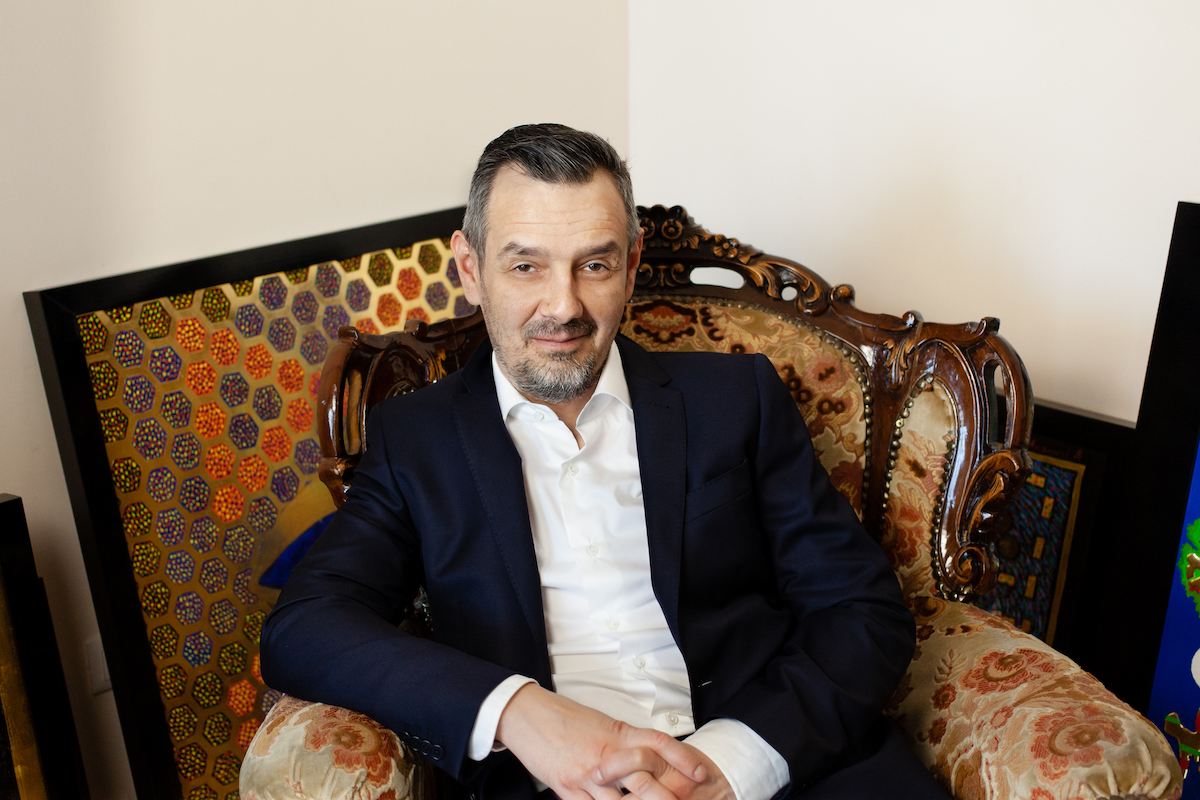
Fascinatingly, Andrey’s contemporary icons are made in the traditional way – oil paint on gold, applied to layers of levkas soil, on a base of wood procured from Ukrainian churches – but portray a cascade of symbols and signs taken from world history, religions and cultures the occult and science, in order to showcase a modern interpretation of the timeless and global connection shared by humanity.
Andrey’s works have been exhibited in Odessa Museum of Western and Eastern Art and Kyiv History Museum, as well as remaining in the private collections of his high-profile fans, including British actor Scott Adkins (Doctor Strange, Zero Dark Thirty). Now Andrey is setting his sights on the London art scene, after the escalating war in Ukraine forced the artist to relocate with his family to the UK and so begin a new chapter in his life’s work.
Here, we learn about the technical skill required to make a modern icon, how Andrey’s global symbolism bridges the gap between our inner and outer worlds, and how the bravery of the Ukrainian people is providing inspiration for his newest works.
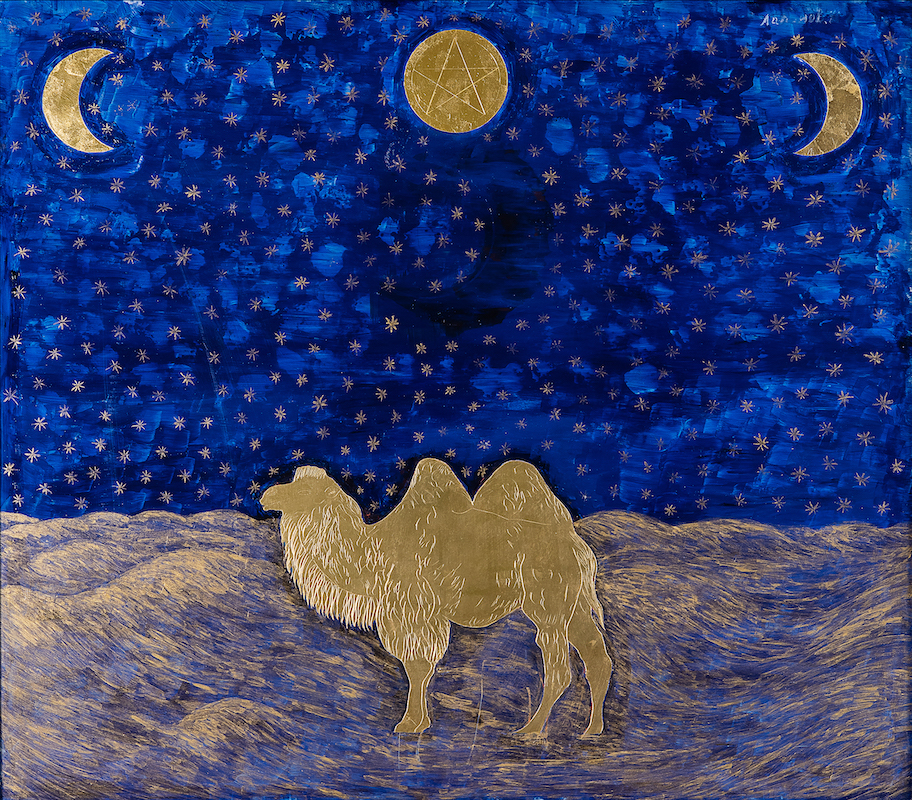
Andrey, how did you develop your icon painting style?
The foundation of my style was formed in childhood and inspired by the famous works of the Old Masters. I could spend hours with a magnifying glass, examining the details of famous art works and trying to replicate them. I created my first original works of realism in the 1990s, but it was some time after that I trained with icon painters and restoration artists, honing my skills and learning the rules and principles of icon painting. The result of comprehending of all the subtleties in this type of painting was, for me, a second birth, and my interest turned from realism to symbolism.
How do you define your artistic approach?
My style is to consolidate modernity with ancient philosophical global teachings and embody all this in my paintings. Since the moment I walked away from narrative art, my whole artistic outlook and technique has changed dramatically. The turning point was my attempt to translate the accumulated knowledge I received studying such disciplines as cultural anthropology, ethnography, sociology of cultures, psychology, religious studies and occult practices. I wanted to translate this through the prism of fine art, and the incredibly rich artistic language of icon painting gives me the freedom and opportunity to focus on the global. This allows me to create expressive images and trace the connection with the subconscious mind.
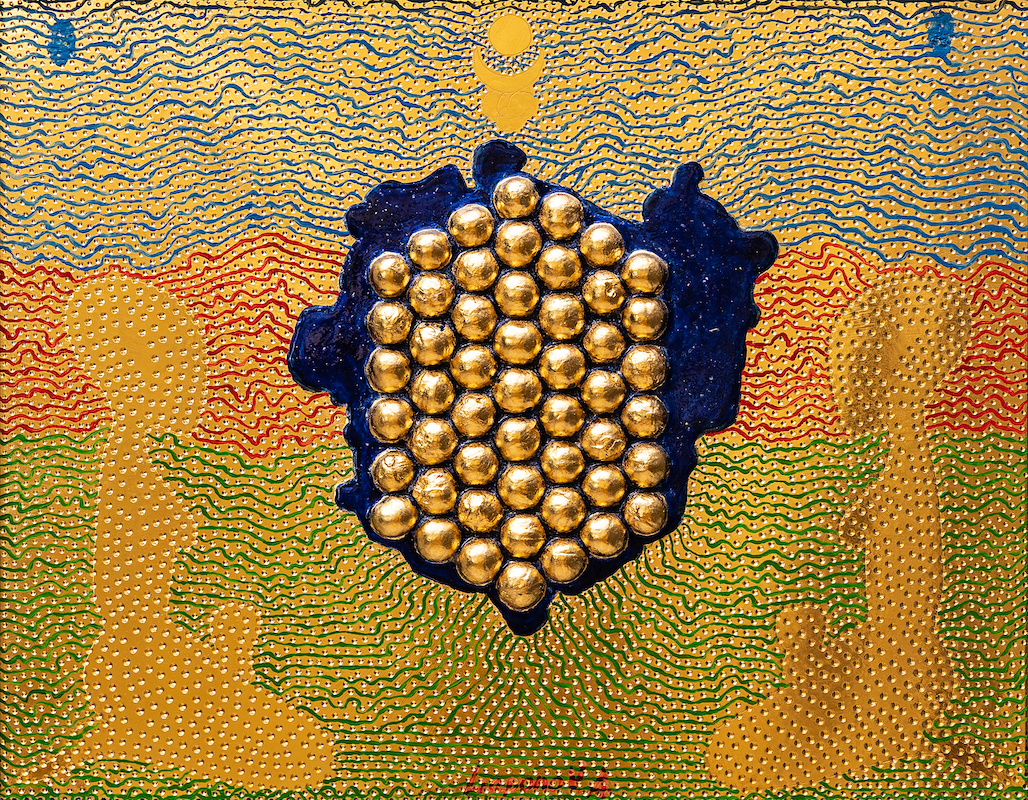
Could you talk us through how you create your icons?
I use the classical techniques of icon painting, beginning with a wooden base – the symbolic image of the ‘Tree of Life’ – which represents a person reaching for spiritual enlightenment. Wood is a sacred material in most cultures, which means it carries the functions of an energy mascot. A layer of icon-painting soil called levkas is then applied to the wood to ensure it keeps its plasticity, and give luminosity and volume to the image. I make levkas from my own recipe, using the traditional components of chalk, oblique and mezzanine adhesives, vegetable oils, honey and more.
Once each layer of levkas has finished ageing, I carefully apply gold to the piece. This is crucial stage, both in terms of technical excellence and symbolic energies.
How significant is gold as a symbol within your work?
Gold – known as Aurum in Latin – represents the cult of light, sun, fire and purification. This is a very powerful conductor of energy, because dozens of generations are bound together by the symbology of this noble metal. I have studied the symbols of different cultures and concluded that gold has always played an important role, both in an occult and utilitarian sense. There’s a long and uninterrupted connection between the aspirations, hopes and prayers of adherents of Christianity, Islam, Judaism, Buddhism, Zoroastrianism and more. For me, it is also important to emphasise the role of gold in contemporary life: namely as a non-objective cultural artifact, as a human fixation.
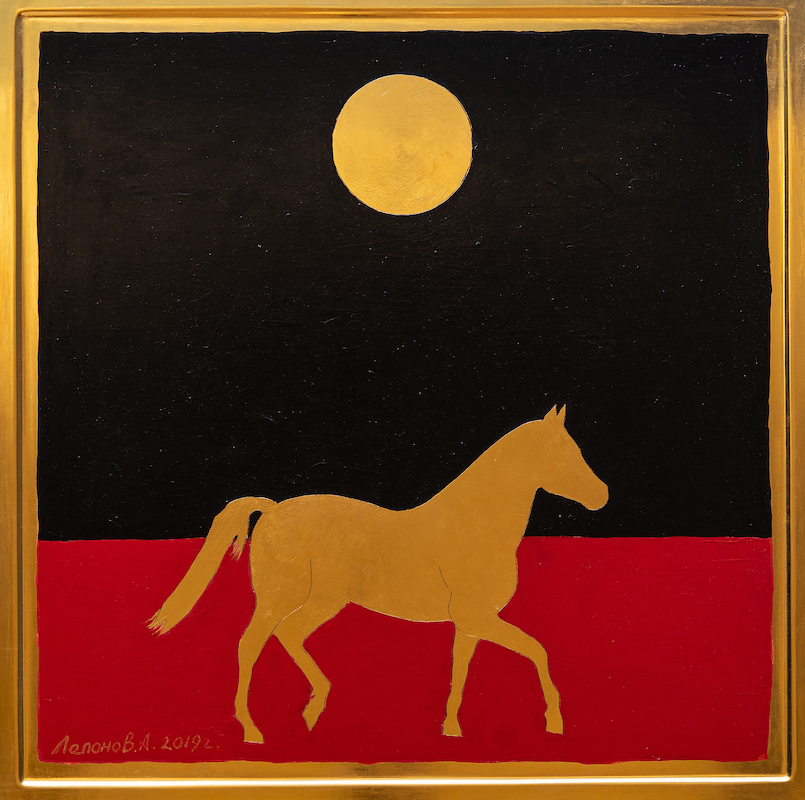
What draws you to different cultures and spiritual movements as inspiration?
I am inspired by the cultural diffusion of knowledge of such matters as good, evil, power, wealth and divinity. The source of my inspiration is knowledge drawn from different cultures. I had the opportunity to get acquainted with Buddhist texts, and the literature describing Taoist practices, and, of course, with the monographs of Hermetic scholars. I like to combine the ancient with the contemporary, to trace the connection of different times and find semiotic combinations that build a bridge over the abyss of centuries. Through symbols, I engage in a dialogue with the viewer about the relevance of pantheism today, about sleeping knowledge, and the transformation of mental energy.
Are there any artists that influence your style?
I am endlessly fascinated by the Old Masters, especially by their boundless desire to achieve perfection: the ideal composition, the colour scheme, light and shadow modelling. They were innovators of their eras. However, the pace of life was much slower then. In their philosophy, the closest and stylistically ‘related’ to me seems to be Wassily Kandinsky (1866-1944), Marc Chagall (1887-1985), Joan Miró i Ferrà (1893-1983), Gustav Klimt (1962-1918), and something from the heritage of American expressionist Jean-Michel Basquiat (1960-1988).
The Soviet avant-gardists stand apart: Kazimir Malevich (1879-1935), who pioneered cubism and futurism, El Lissitzky (1890-1941), and the early work of Wladimir Burliuk (1886-1917). In a way, each of them gave me the keys to opening new doors to the understanding of my own potential. I admire and bow to them as a spectator and listen as an experienced student with my own opinion.
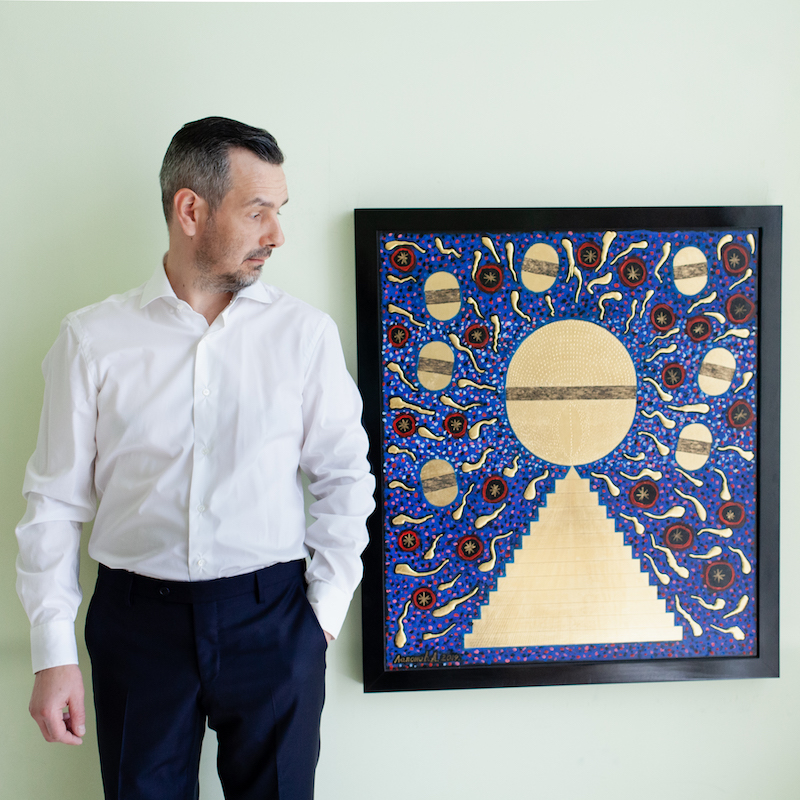
Do current events – such as the war in Ukraine – impact your art?
What is happening in my homeland is beyond comprehension. My country, my people, are truly stoic. The growth of my inspiration is thanks to every individual that has been touched by the brave and unnecessary sacrifices that are happening at this very moment. I have a few ideas in mind for future artworks that acknowledge the power of unity and spirituality of humankind, which is timeless.
You are currently based in the UK. Could you tell us a little bit about your plans for the near future?
As you can understand, my move was unplanned and scrupulous, due to the war in my country. The endless sounds of sirens, constant threats and the actual shelling of my hometown, Odessa, made my family’s life unbearable, and I had to leave everything behind for their safety. The choice was very clear. I am so grateful for this opportunity to live and feel safe [in the UK] and for the tremendous support that the UK has provided to Ukraine and its people. Since moving to the UK, I have embarked on a long-planned and immersive field of research for my next artistic project, which is very exciting.
For more information on the artist, or to purchase existing works and arrange commissions, please contact Vantage Media via michelle@vantagemediagroup.co.uk







